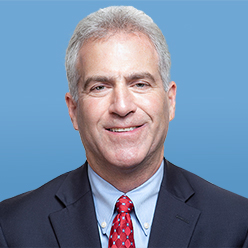Advocates of U.S. aid to Ukraine argue that the world should support brave Ukrainians who are trying to fend off an attempted conquest – and that if Vladimir Putin conquers Ukraine, he will feel emboldened to move into the Baltics and Eastern Europe in hopes of resurrecting as much of the Soviet empire as he can.
Meanwhile, the advocates argue, thirsty dictators in Beijing, Pyongyang, and Tehran are working more closely with Moscow and one another in a burgeoning “axis of autocracy,” and they’re looking for signs of Western weakness in Ukraine as they eye their own targets of possible conquest.
But with a similar dynamic at play in the Middle East, Washington and the West are approaching the war between Israel and Hamas much differently, pressuring Jerusalem to agree to a ceasefire and abandon plans to take the fight to Rafah.
U.S. efforts to limit the fighting in Gaza are understandable in light of global concerns about civilian suffering. The enclave’s Hamas-run Health Ministry says Palestinian deaths are nearing 30,000, and the United Nations says 80 percent of Palestinians have fled their homes and a quarter of them are starving.
But as with Ukraine, the dictators in Moscow, Beijing, and Pyongyang are watching events in the Middle East and gauging Western resolve. Watching from a closer vantage point are Tehran and the terror groups it funds, equips, and trains – not only Hamas but, most prominently, Hezbollah in southern Lebanon.
A ceasefire, temporary or otherwise, would leave Hamas in place to rebuild and launch more October 7-like attacks, which its leaders have vowed to do until they destroy the Jewish state. It also would encourage Hezbollah and other terror groups to step up their own attacks on Israel, secure in the knowledge that Washington and the West would soon pressure Jerusalem to limit the scope of its military response.
With that in mind, U.S. and European leaders would be wise not to pressure Israel to accept a premature peace that will encourage more bloodshed and even bigger battles in the future across this volatile region or beyond.
At the moment, all the world is focused on Gaza. In recent days, the United States vetoed a Security Council resolution that urged a ceasefire, but U.S. officials are drafting an alternative version that would urge a temporary ceasefire, free Hamas’ hostages, and allow for more humanitarian aid to reach the enclave.
Meanwhile, the International Court of Justice held hearings on Israeli policy in the “Occupied Palestinian Territory,” which it defines as the West Bank, East Jerusalem, and Gaza – even though Israel withdrew from Gaza in 2005 and it’s been ruled by the Palestinian Authority and then Hamas ever since.
With Israel continuing its military operation in Gaza, targeting terrorists and destroying tunnels and other infrastructure, U.N. and other global leaders are pressuring Jerusalem not to move into Rafah – which is Hamas’ “last military stronghold” but where 1.4 million Palestinians are sheltering.
Israeli leaders remain determined to move into Rafah to continue to “dismantle Hamas’ remaining battalions,” and they said the operation likely would take weeks to complete, but Washington wants Jerusalem to have a plan in place to ensure that innocent Palestinians remain safe.
While the West frets about Gaza, however, Hezbollah has been attacking Israel nearly daily since October 7 – launching thousands of rockets, missiles, and drones and displacing 80,000 Israelis from their homes in the north – and Jerusalem says Tehran is “accelerating its shipments of weapons” to the terrorist group.
Israel’s leaders say they will no longer tolerate Hezbollah’s presence so close to the border from which – with far more powerful weaponry than Hamas – it could launch a far more devastating attack on the Jewish state. And they’re warning that if the international community does not find a way to dislodge the terror group from the border, they will turn Israel’s guns on Hezbollah once they finish off Hamas.
Among those watching for signs of Western resolve are Hezbollah’s secretary-general, Hassan Nasrallah, and his backers in Tehran.
Hezbollah, which is both a Shiite political party and a terrorist group, reportedly has 20,000 active fighters and 20,000 reserves and an arsenal of weaponry that includes small arms, tanks, drones, and an estimated 130,000 rockets – making it “the world’s most heavily armed non-state actor.”
For now, Nasrallah has been content to distract Jerusalem with pinprick attacks rather than engage it in full-scale war.
Will that continue? Or will Nasrallah and his patrons decide to deploy Hezbollah’s fighters and try to overwhelm Israel by launching thousands of rockets while Jerusalem remains mired in Gaza?
Whether Washington and the West stand by Israel or raise the pressure on it to back off in Gaza may go a long way toward shaping Hezbollah’s next move.
